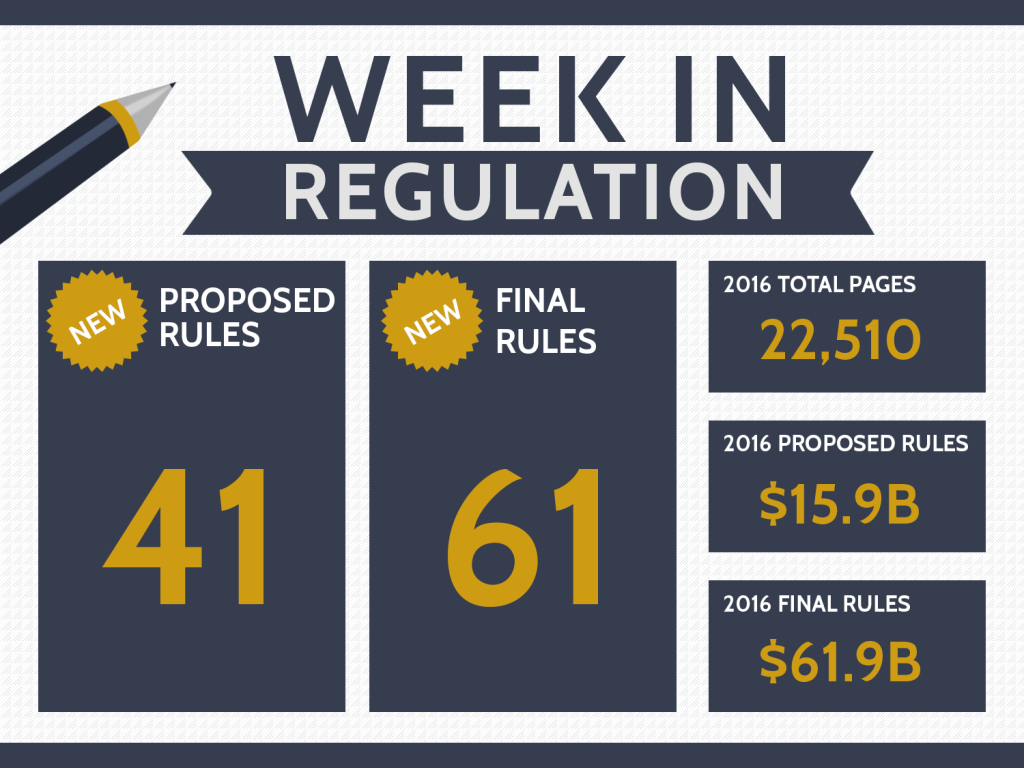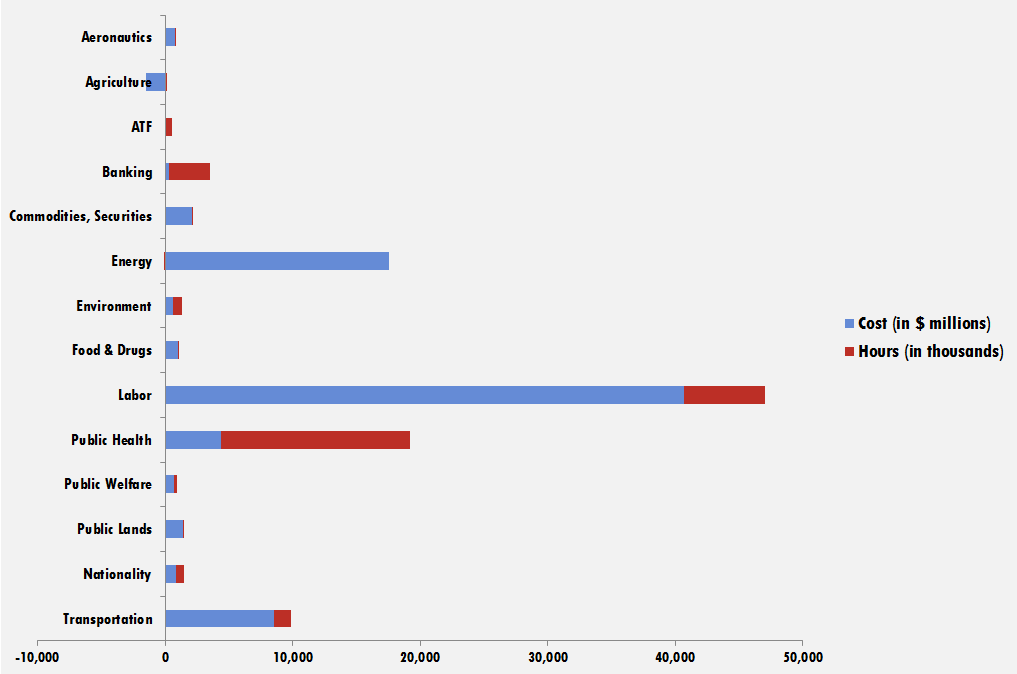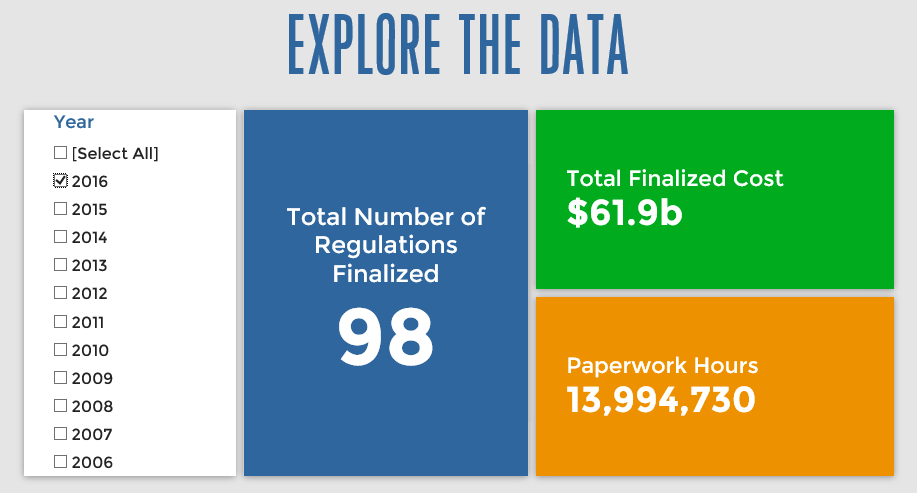Week in Regulation
April 17, 2016
$282 Million in Activity
After a week of everything, this week in regulation was mostly nonexistent in terms of regulatory volume and significant rulemakings. Other than a slate of routine airworthiness directives, the only notable regulation was an “Organic Livestock and Poultry Practices” proposal from the Department of Agriculture. The per capita regulatory burden for 2016 is $241.
Regulatory Toplines
The American Action Forum (AAF) has catalogued regulations according to their codification in the Code of Federal Regulations (CFR). The CFR is organized into 50 titles, with each title corresponding to an industry or part of government. This snapshot will help to determine which sectors of the economy receive the highest number of regulatory actions.
The lone regulation of note this week implemented part of the National Organic Program, revising standards for livestock and poultry. New standards include provisions for transporting animals to slaughter, avian living conditions, and livestock health care practices. The annual costs of the measure are $27 million, compared to $62 million in benefits. The former derive from, “the real improvements in attributes (e.g. animal welfare) for organic poultry products.” To illustrate, the administration estimates consumers are willing to pay between 21 and 49 cents more per dozen eggs that have outdoor access. Thus, multiplied by the quantity of organic eggs, and benefits range from $14 million to $62 million. In other words, the administration estimates consumers gain $62 million in benefits from valuing improvements in animal welfare.
In other news, today is Tax Day, and although that has direct fiscal consequences for Americans, that day also implies regulatory costs. Here is AAF’s analysis. It should be noted the administration now estimates IRS compliance at $1.7 trillion, but this appears to be yet another massive typo.
Affordable Care Act
Since passage, based on total lifetime costs of the regulations, the Affordable Care Act has imposed costs of $52.8 billion in state and private-sector burdens and 187.2 million annual paperwork hours (170.6 million from final rules).
Dodd-Frank
Click here to view the total estimated revised costs from Dodd-Frank; since passage, the legislation has produced more than 76.5 million paperwork burden hours and imposed $39.2 billion in direct compliance costs.
A Note on Paperwork
The Office of Management and Budget approved 49 paperwork requirements, increasing the paperwork burden by 357,222 hours. There were no major change to existing paperwork requirements (defined as an hourly burden increase or decrease of 500,000 or greater).
The largest increase in paperwork burden hours imposed by an information collection requirement (ICR) was 197,646 hours from EPA. The largest decrease in paperwork burden hours imposed by an ICR was 89,926 hours from the Department of Education.
Total Burdens
Since January 1, the federal government has published $77.8 billion in compliance costs ($61.9 billion in final rules) and has imposed 29.6 million in net paperwork burden hours (13.9 million from final rules). Click below for the latest Reg Rodeo findings.













